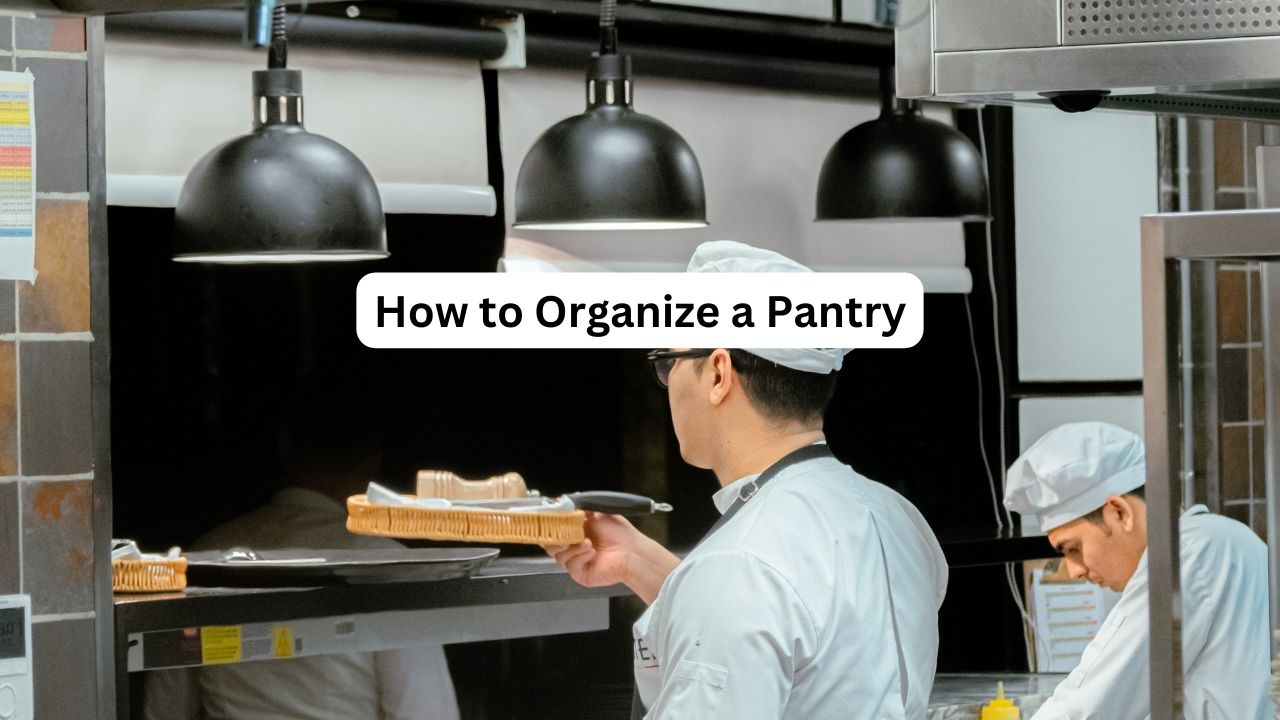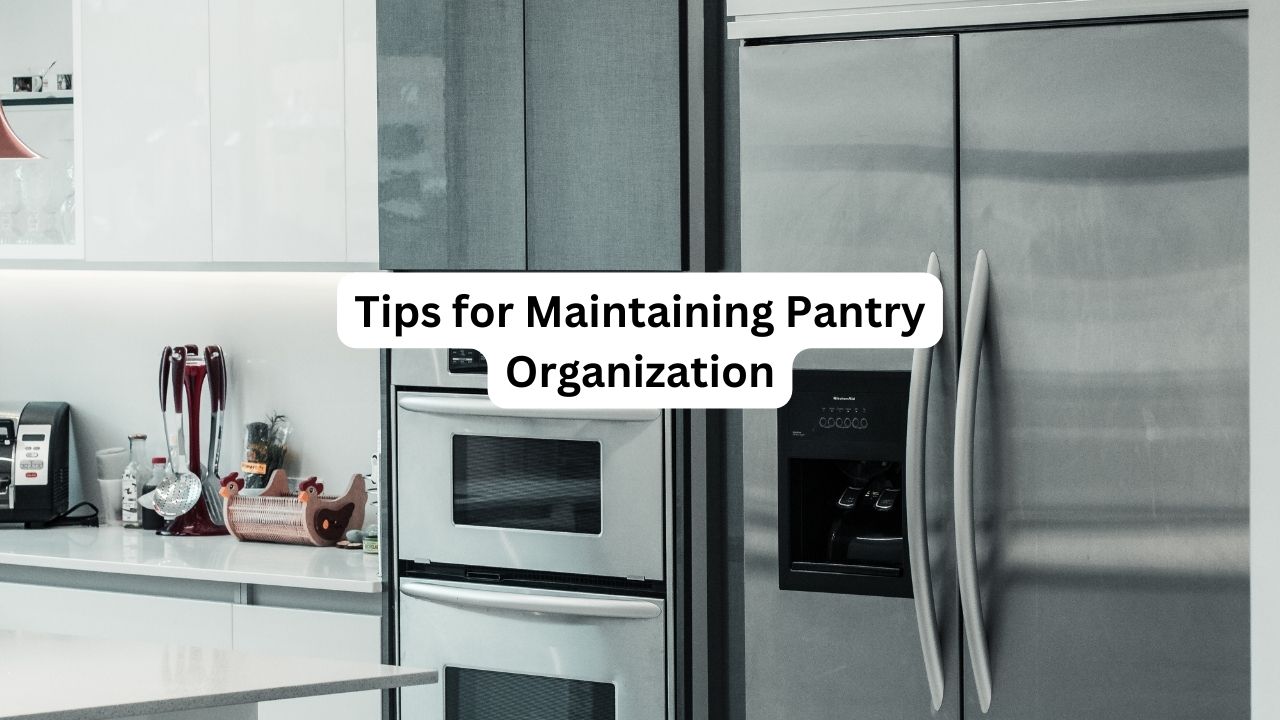A well-organized pantry can make meal prep and grocery shopping a breeze. Here are 10 tips to help you achieve pantry perfection.
1. Empty and Clean: The first step to organizing your pantry is to empty completely. Take everything out, check expiration dates, and give the shelves a good wipe down. This will you a fresh start and make it easier to see what you have.
2. Categorize Sort items into categories like grains, canned goods, snacks, and spices. This will help you see how much of each item you and make it easier find what you need.
3. Invest Storage Containers: Clear storage containers can help keep items fresh and make your pantry look more organized. Invest in a variety of sizes to fit different items and label them for easy identification.
4. Utilize Vertical Space: Make use of the vertical space in your pantry by installing shelves or hanging organizers. This will help you maximize storage space and make it easier to see and access items.
5. Use Lazy Susans: Lazy Susans are a great way to make items in the back of your pantry more accessible. Use them for spices, oils, or other small items that tend to get lost in the shuffle.
6. Group Like Items Together: Keep similar items together to make it easier to find what you need. For example, group all your baking supplies in one area and all your canned goods in another.
7. Label Everything: Labeling your storage containers and shelves will help you and your family members know where everything belongs. This will make it easier to maintain your organized pantry in the long run.
8. Rotate Items: To prevent food from going bad, make sure to rotate items so that older items are used first. This will help reduce waste and ensure that you’re always using up fresh ingredients.
9. Keep a Shopping List: Keep a running shopping list in your pantry to jot down items that need to be replenished. This will help you stay organized and make grocery shopping a more efficient process.
10. Regularly Declutter: Set aside time each month to declutter your pantry and get rid of items that have expired or are no longer needed. This will help you maintain an organized pantry and prevent clutter from building up.
By following these tips and staying consistent with your organization efforts, you can create a pantry that is not only functional but also aesthetically pleasing. A well-organized pantry can save you time and money in the long run, making meal prep and grocery shopping a more enjoyable experience.
FAQ: How to Organize a Pantry
Q1: What are the first steps to organizing a pantry?
A1: The first steps to organizing a pantry include:
- Empty the Pantry: Remove all items to assess what you have and what needs to be discarded.
- Clean the Shelves: Wipe down shelves and clean any spills or crumbs.
- Sort Items: Group similar items together, such as baking supplies, snacks, and canned goods.
Q2: How can I efficiently categorize pantry items?
A2: To efficiently categorize pantry items:
- Group by Type: Store similar items together, such as grains, canned goods, spices, and snacks.
- Use Bins and Containers: Use bins or containers to group smaller items and keep them organized.
- Label Everything: Clearly label shelves and containers to identify where items belong and make finding things easier.
Q3: What are some effective storage solutions for small pantries?
A3: Effective storage solutions for small pantries include:
- Stackable Bins: Maximize vertical space by using stackable bins for dry goods and snacks.
- Pull-Out Drawers: Use pull-out drawers or baskets to access items in the back of the pantry.
- Over-the-Door Organizers: Utilize the back of the pantry door for additional storage of smaller items.
Q4: How can I maintain pantry organization?
A4: To maintain pantry organization:
- Regularly Declutter: Periodically review and declutter your pantry to remove expired or unnecessary items.
- Restock Wisely: Only purchase what you need and use the FIFO method to use older items first.
- Follow a Routine: Establish a cleaning and organizing routine, such as monthly or quarterly, to keep the pantry in order.
Q5: How can I keep track of expiration dates in my pantry?
A5: To keep track of expiration dates:
- Label Containers: Label containers with the date of purchase or expiration date.
- Implement FIFO: Use the FIFO method by placing older items at the front and newer items at the back.
- Regular Checks: Periodically review your pantry and check for items nearing their expiration dates.
Q6: What are the benefits of using clear containers for pantry organization?
A6: Clear containers offer several benefits:
- Visibility: You can easily see what’s inside, helping you quickly locate items and monitor inventory.
- Uniformity: Provides a neat and uniform appearance, making your pantry look organized.
- Freshness: Many clear containers are airtight, helping to keep food fresh for longer periods.
Q7: How can I make my pantry more accessible?
A7: To make your pantry more accessible:
- Use Adjustable Shelves: Install adjustable shelves to accommodate various container sizes and items.
- Place Frequently Used Items at Eye Level: Store items you use most often at eye level for easy access.
- Organize by Frequency of Use: Group frequently used items together and keep them within easy reach.
Q8: How do I handle bulk items in my pantry?
A8: To handle bulk items:
- Use Large Containers: Store bulk items in large, airtight containers to keep them fresh and organized.
- Store in a Designated Area: Allocate a specific area in your pantry for bulk items to keep them separate from everyday supplies.
- Label Clearly: Label containers with the item and the date of purchase or expiration.
Q9: What are some common mistakes to avoid when organizing a pantry?
A9: Common mistakes to avoid include:
- Overcrowding: Avoid overloading shelves, which can lead to difficulty finding items and clutter.
- Ignoring Expiration Dates: Not monitoring expiration dates can result in expired food taking up space.
- Lack of Labeling: Without labels, it can be hard to find items and maintain organization.
Q10: How can I involve my family in maintaining pantry organization?
A10: To involve your family:
- Assign Tasks: Designate specific organizing tasks to each family member.
- Create a System: Develop a clear organization system that everyone can follow and understand.
- Encourage Participation: Encourage family members to help with regular maintenance and restocking.


